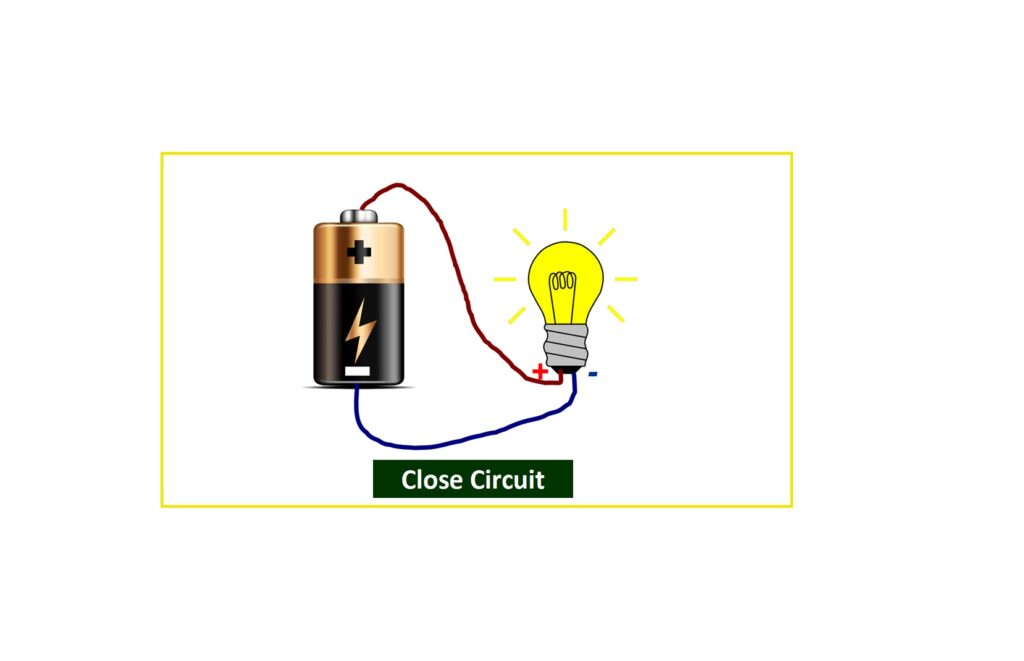What is the definition of a closed circuit? Because of the closed-loop path, electric current (charged particles) passes from an active energy source to the connected load or other components in a closed circuit. We need conducting materials or conductors (like copper) path, an active voltage source device (like a battery), and a full path or circuit to flow the electric current in a closed circuit.
What is the Closed Circuit?
A closed circuit is similar to a road that crosses a river via a bridge. A bridge allows your car to move down a road, over a waterway, and return to the other side. A closed circuit allows electrical energy (electrons) to flow and move. There are no interruptions in a closed circuit to stop the flow of power. When a circuit is complete and the current can flow, it is called a closed circuit.
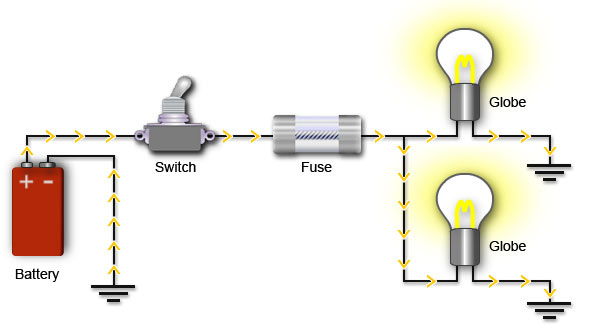
The current has a complete path when the switch is closed. The circuit is now ‘closed’ and functional. When a switch gets jammed in the ‘on’ position, a closed circuit as a failure occurs.
A complete path for current to flow exists in a closed circuit. An open circuit, on the other hand, does not, indicating that it is not functional. If this is your first introduction to circuits, you might imagine that an open circuit is similar to an open door or gate through which current can pass. When it’s closed, it’s like a closed door that prevents current from flowing through. It may take some time to get acclimated to this concept because it is exactly the opposite. Visit here to explore more about these definitions.
A switch that makes contact from one connection terminal to the other (for example, a knife switch with the blade fully touching the fixed contact point) offers continuity for the current to pass through and is referred to as a closed switch in circuit terminology. An open switch, on the other hand, will not allow current to pass through since it is breaking continuity (for example, a knife switch with the blade not touching the stationary contact point).
This terminology can be confusing to a new student of electronics because the words “open” and “closed” are commonly understood in the context of a door, where “open” means “free passage” and “closed” means “blockage.” When it comes to electrical switches, the phrases “open” and “closed” have polar opposite meanings: “open” denotes no flow, while “closed” indicates the free passage of electric current.
Electricity in Action in a Closed Circuit
We’ll start by going over the elements we’ll need to produce electricity:
The flow of charge is the definition of electricity. Our charges are usually carried by free-flowing electrons.
Electrons with a negative charge are bound loosely to atoms in conductive materials. We can free electrons from atoms and induce them to flow in a reasonably uniform direction with little effort.
A continuous path for electrons to move is provided by a closed circuit of conductive material.
An electric field drives the charges forward. A source of electric potential (voltage) is required to push electrons from a low potential energy state to a higher potential energy one.
Chemical energy is converted to electrical energy by batteries, which are popular energy sources. They have two terminals on which the rest of the circuit is connected. On one terminal, there are more negative charges than positive charges, whereas, on the other, all of the positive charges coalesce. This is a ready-to-act electric potential difference.
If we connect our wire full of conductive copper atoms to the battery, the negative-charged free electrons in the copper atoms will be influenced by the electric field. The electrons in copper will migrate from atom to atom while being simultaneously pushed and pulled by the negative and positive terminals, resulting in the charge flow we know as electricity.
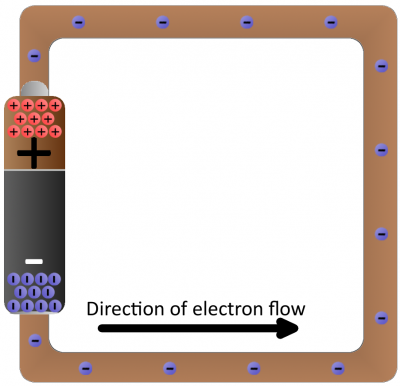
The electrons have moved very little after a second of current flow—fractions of a centimeter. The energy created by the current flow, on the other hand, is enormous, especially since there is nothing in this circuit to slow down or waste the energy. It’s not a good idea to connect a pure conductor directly to an energy source. Energy travels quickly through the system and is converted to heat in the wire, which can soon lead to melted wire or fire.
Illuminating a Light Bulb Using a Closed Circuit
Let’s create a circuit that accomplishes something helpful instead of wasting all that energy and damaging the battery and wire! In most cases, an electric circuit will convert electric energy into another form, such as light, heat, or motion. A simple, working circuit can be created by connecting a light bulb to a battery with wires in between.
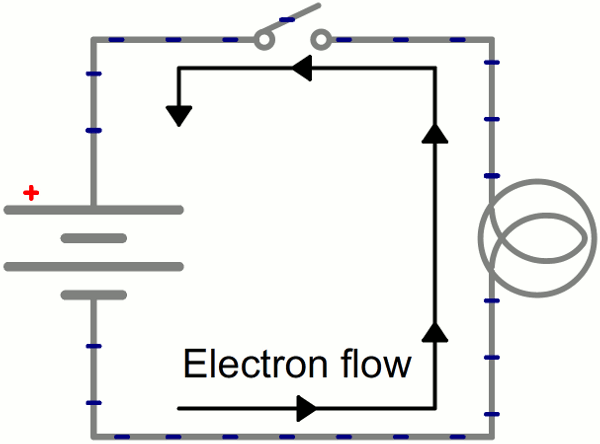
When the switch (top) shuts, the circuit between the battery (left) and the lightbulb (right) is completed. When the circuit is closed, electrons can flow from the negative terminal of the battery to the positive terminal via the lightbulb.
The electric field influences the entire circuit practically instantly (we’re talking speed of light fast) whereas the electrons move at a snail’s pace. The electric field influences electrons across the circuit, whether at the lowest potential, greatest potential, or immediately adjacent to the light bulb. When the switch is closed and the electrons are exposed to the electric field, all of the electrons in the circuit begin to flow at the same moment. Those charges closest to the light bulb will complete one circuit step and begin converting energy from electrical to light (or heat).
Example of Closed Circuit
Assume that the DC voltage supply battery is connected to the lamp (as a load) and the switch is closed. The circuit creates a complete path for the electric current to pass due to the closed switch. The bulb is glowing in the closed circuit, as shown in the diagram below.
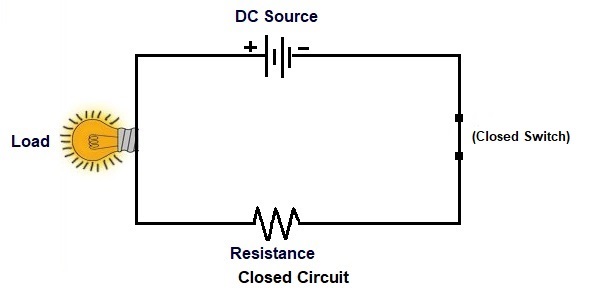
Closed Circuit Diagram
Closed Circuit: In a closed circuit, the connected source and load form a closed-loop path.
We need a switch to make (ON) and break (OFF) the circuit for the electrical and electronic circuits to work (open circuit and closed circuit). Circuit breakers and fuses both perform the same switching (create and break the circuit) function in a power system, both manually and automatically, when a problem occurs.
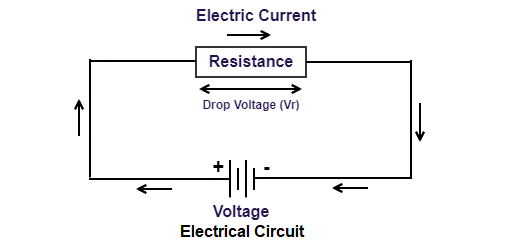
Difference between Open Circuit and Closed Circuit
We are comparing the basic points about open circuit vs closed circuit in this section:
Fundamentals
An open circuit creates an insufficient channel for active energy to pass from the source to the load. A closed circuit creates a complete path for active energy to travel from the source to the load.
Electric Current
Current does not flow in an electrical open circuit. Current flows from positive to negative charge particles in a closed electric circuit.
Symbol
In an electric circuit, an open circuit is represented by the symbol ‘( )’, while a closed circuit is symbolized by the symbol ‘(. )‘.
Potential Difference
The potential difference between the two terminals of an open circuit does not exist in an electric circuit. The potential difference in an electric circuit occurs between the closed circuit’s two terminals.
Nature
Electricity cannot flow across an open circuit. With the help of connected active elements, a closed circuit transmits electricity (like a battery, PV cell, etc.).
State
The open circuit functions as an OFF state. A closed circuit operates in the ON state all of the time.
A Review on the Different Circuits
- The term “resistance” refers to the amount of resistance to electric current.
- A short circuit is an electric circuit that has very little or no resistance to current flow. With high voltage power sources, short circuits are problematic because the high currents encountered can release a lot of heat energy.
- An open circuit is one in which the continuity has been disrupted due to a break in the current flow channel.
- A complete circuit with sufficient continuity is referred to as a closed circuit.
- A switch is a device that opens or closes a circuit under regulated conditions.
- The terms “open” and “closed” are used to describe both switches and whole circuits. An open switch is one that has no continuity, meaning that no current can flow through it. A closed switch allows the current to flow in a direct (low resistance) path.
Buy Equipment or Ask for a Service
By using Linquip RFQ Service, you can expect to receive quotations from various suppliers across multiple industries and regions.
Click Here to Request a Quotation From Suppliers and Service Providers
Read More In Linquip
- What is Open Circuit? Diagram & Example
- What is Short Circuit? A Clear Definition & Protection Guide
- What is Series Circuit? Definition & Example
- What is Parallel Circuit? Definition & Example
- What is a Paper Capacitor?
- What is Resistive Circuit? Example & Diagram
- What is Linear Circuit? Example & Diagram
- What is Capacitive Circuit? Formula & Function
- What is LC Circuit? Formula, Equitation & Diagram
- What is RL Circuit? Formula, Equitation & Diagram
- What is RC Circuit? Formula, Equitation & Diagram
- Types of Resistor: Classification, Application, and Finally Clarification
- What is Closed Circuit? Definition & Example
- What is Inductive Circuit?
- Difference Between Linear and Nonlinear Circuits
- Types of Electric Circuits: All Classification with Application
- What are the Differences Between Series and Parallel Circuits?
- What is AC Circuit and Its Characterization?
- Circuit Breaker vs Fuse- What are the Main Differences?
- How does a Circuit Breaker Work?
- What is the Equivalent Circuit of Transformer?
- Potentiometer Connection, Working, Circuit Diagram, & Wiring Guide

